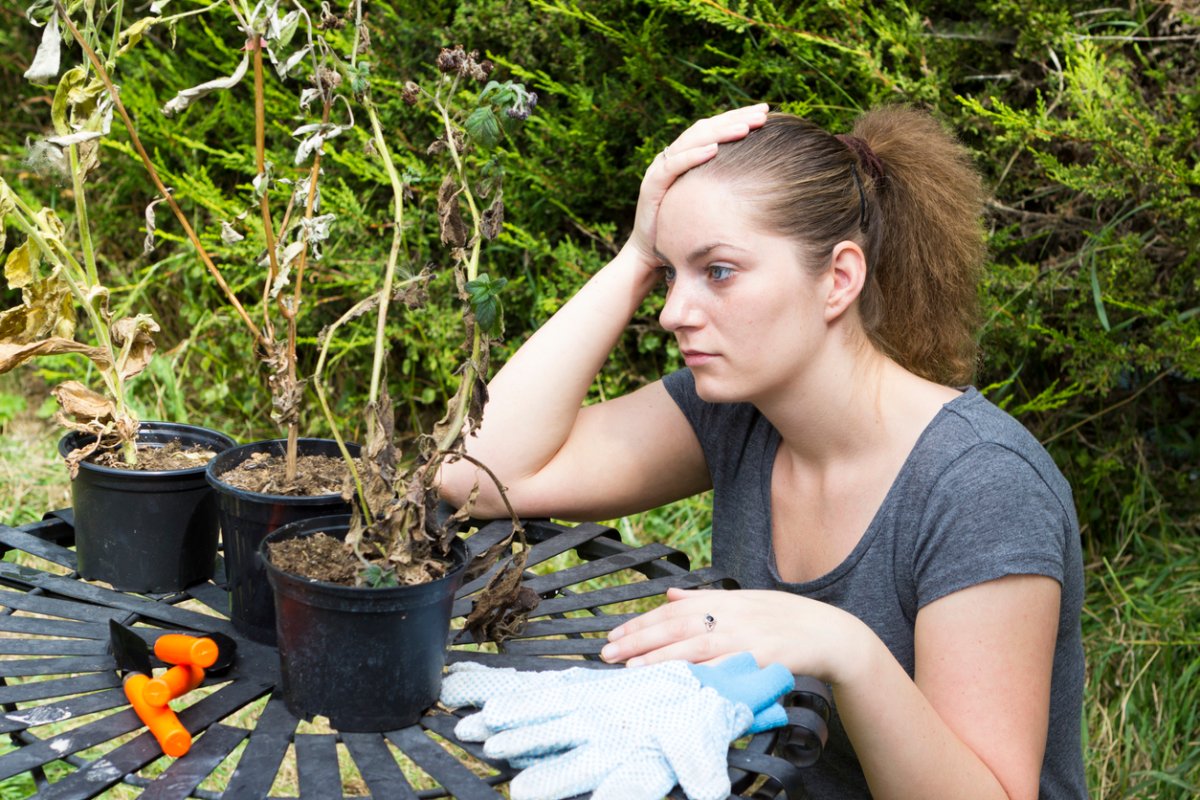

We may earn revenue from the products available on this page and participate in affiliate programs. Learn More ›
Many gardening errors can be blamed on impatience, as we often endeavor to make our plants bear fruit (or flowers) as quickly as possible. However, as with raising real children, plant parenthood means nurturing our seedlings through the difficult times all the way to full maturity. Otherwise, they might not stand strong enough to make you proud!
Slow down and enjoy the process as much as the final product, and you’ll find it makes gardening as relaxing as it is rewarding. If your plants have ever fallen victim to the below errors, know that you’re not alone; many gardeners in a hurry have made these common mistakes.
RELATED: 12 Gardening Mistakes That Are Killing Your Plants
1. Starting Seeds Too Early

During winter, bored gardeners might be tempted to start seeds as early as January. However, if your last frost date isn’t until May, annual plants will be bursting at the seams of their indoor containers by then.
A good rule of thumb is to sow hardy flowers and vegetables such as pansies and brassicas 10 weeks before your last spring frost date and set them out a month before that date. Start those that aren’t hardy, such as impatiens and tomatoes, by sowing two months before that last frost date to be set outdoors just after the last frost passes.
2. Fertilizing Too Much Too Soon

Just as you wouldn’t feed adult food to a baby, don’t give young plants a mature plant’s dose of fertilizer. Instead, wait until they have a couple of true leaves—the second pair of leaves that appear just after the roundish seed leaves—before you begin feeding them. Then, use only about a quarter of the amount of fertilizer recommended by the product instructions or else you might burn your seedlings. A gentle organic fertilizer like fish emulsion works well for this purpose, as long as you don’t mind the odor.
3. Turning the Soil Too Early

Tilling your garden too early can have unpleasant consequences, especially if you have clay soil. It will cause your plot to thicken, and not in a good way! If you attempt to work soil too soon, while it is still sticky, hard clumps can form and stick with you for the rest of the summer.
To test if your garden is ready, first try squeezing a handful of soil. If it forms a hard ball in your palm, it’s too wet to work. If it crumbles, you are good to hoe.
4. Not Hardening Off Seedlings

Seedlings started indoors under artificial light are like your skin in spring—soft and sensitive after spending months protected from sun and wind. As with your epidermis, your plant’s foliage needs to be exposed to outdoor conditions gradually or it will burn.
For seedlings that are not already in a cold frame, start the hardening process one to two weeks before you plan to set the plants out. Begin by placing them in a shady position outdoors for only a couple of hours. Extend the amount of time they are out each day, moving them into full sun gradually.
RELATED: The Dos and Don’ts of Planting Ground Cover
5. Planting Seedlings Too Deep

Tomato seedlings can and should be planted quite deeply, so that two-thirds of the plant is underground. This encourages them to make more roots on the buried part of the stem. However, most other plants won’t tolerate such treatment and shouldn’t be set in the ground or a bed any more deeply than they grew in their original container.
If your vegetable garden tends to be overly wet and you can’t build raised beds, you can place your plants in raised rows that are a bit higher than the walkways (or troughs) between those rows. This allows excess water to drain off the vegetables’ raised soil.
6. Choosing a Site Without Enough Sun

Some flowers and vegetables, such as impatiens and salad greens, will tolerate partial shade and may even prefer it due to the cooler conditions it provides. However, most plants—such as tomatoes and marigolds—want all the sun they can get, preferably a minimum of 8 hours a day. If they aren’t provided with enough light, they won’t flower or fruit well and will be prone to fungus problems.
7. Allowing Seedlings to Dry Out

Once you set out seedlings, you might heave a sigh of relief and think you can let Mother Nature take over. However, she isn’t always an attentive parent, and her irrigating tends to be a touch sporadic. So, you might need to keep watering a little extra until your transplants are established.
A layer of mulch around young plants can help keep them damp. Depending on the type of mulch you choose, it also can keep the soil cooler. And based on the type of plant you are growing, that may or may not be a good thing, so you might skip the mulch for heat-loving plants.
8. Failing to Repel Garden Pests

Despite all of your work, you might enter your garden one morning to find your precious seedlings dug up or chewed down. The digging could have been the work of skunks looking for grubs in damp soil, while the chewing might be the fault of hungry rabbits or groundhogs.
If you know such varmints lurk in your neighborhood, you often can “chill” the chewers by sprinkling transplants with cayenne pepper immediately after setting them out. Discouraging the diggers can be more difficult, however. Ensuring that all of the garden is moist, rather than just the parts around your transplants, might help deter these persistent pests.
RELATED: 12 Bulbs to Plant in the Spring for Showstopping Summer Blooms
